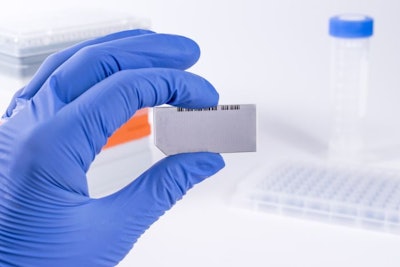
Next-generation sequencing (NGS) food safety technology that promises to deliver unprecedented insight into supply chains at a rate and scale never experienced before is poised for commercial launch in poultry processing.
Poultry processors at the Poultry Tech Summit will get a close look when Clear Labs, Inc. presents a method that utilizes the NGS technology and advanced data analytics and bioinformatics tools for detection and serotype identification of Salmonella spp. in samples taken from carcass rinses, ground poultry, poultry parts, boot swabs and equipment swabs.
NGS technology’s fast turnaround time of 24 hours for detecting and sequencing Salmonella and 99.9 percent accuracy mean poultry processors will be able to reduce costs and keep inventory shipments moving.
The Clear Labs platform has the potential to be applied across many food categories but the first version is designed to meet the needs of the poultry industry. The product has been piloted at poultry companies including Tyson Foods, Perdue Foods and Foster Farms. The company is seeking venture capital that could help bring the product to market within a year.
NGS sequencing faster, more accurate
Current Salmonella testing solutions rely on polymerase chain reaction (PCR) technologies for detection of the target pathogen. The Clear Labs platform utilizes next-generation advanced sequencing technologies for greater accuracy and fewer false positives.
PCR serotyping services require a bacterial isolate of the target pathogen and a 3-5 day turnaround time. In contrast, the NGS method enables Salmonella serotyping without the need for bacterial culturing or isolation, reducing the turnaround time to 24 hours and allowing companies to make more timely decisions and corrective actions.
The high-throughput DNA sequencing generates hundreds of millions of data points per analysis that can be used to learn significantly more than what current pathogen screening allows. The technology can sequence 200 to 300 samples at a time and generates up to 25 million reads per a single experiment. This level of information can identify pathogens at the strain level and can be used to perform WGS for samples with unknown pathogens or ingredients.
The new food safety management platform’s accuracy sharply reduces false negatives and positives, curtailing recall risks, operational costs, holding time, and short-shipping penalties.
NGS’s proponents say its adoption will result in “bulletproof food safety testing programs that provide unprecedented insight into supply chains at a rate and scale never experienced before.”
More food safety innovations at Poultry Tech Summit
- General Probiotics Inc. will present a new class of probiotic cultures which will reduce the load of pathogens carried by poultry and has the potential to improve both bird health and food safety
- Technicon LLC has developed a gear box for processing line applications which has an outer surface that is rust-proof, has antimicrobial properties and has a smooth surface for easy cleaning.
Register to attend Poultry Tech Summit
Poultry Tech Summit will be held November 5-7, 2018, at the Georgia Tech Hotel & Conference Center, Atlanta, Georgia, USA. Register to attend Poultry Tech Summit.













